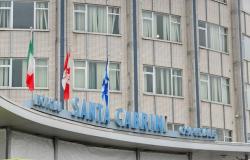The MASI index crossed 15,000 points for the first time, showing an annual increase of almost 24%. This record reflects a sharp increase in demand and a renewed confidence of investors, which is based on the launch of numerous structuring projects, in particular those linked to the preparations for the CAN 2025 and the 2030 World Cup.
On November 19, 2024, the MASI stock index (Moroccan All Shares Index) crossed the threshold 15.000 points before closing at 14,976.79 points, recording an increase daily of 0,77%.
On the plan monthly, the index shows an increase of 5,71%, while sliding annual, he flies away 23,85%, or almost a quarter of growth. An unprecedented feat in the history of the Moroccan Stock Exchange.
At the time of writing this article, the MASI exceeds the 14.990 points. This threshold reflects the dynamics of current economic activity, and stands out resolutely in the debates relating to the valuation of the index as well as the overall health of the national financial market.
This recent rise confirms that the market is on the same trajectory of its recent surge, surpassing the 14.400 points September 27 last. Since then, opinions have diverged regarding the valuation of MASI, sparking a lively debate among financial analysts.
Some view the market as overvalued, pointing to a significant gap between stock price growth and the actual performance of listed companies. According to them, this disconnect between stock market valuation and company profits would inevitably lead to an aggressive market correction in the near future. Other analysts believe that the current valuation accurately reflects economic fundamentals.
This debate is based on a fundamental question: must the evolution of stock prices necessarily correspond to the current profits of companies, or can it incorporate expectations about their future growth?
As we pointed out in our analysis, stock prices do not necessarily reflect the immediate performance of companies, but often reflect an “anticipated value” (expected value) of their future potential.
Indeed, the Stock Market is based on a medium (2 to 8 years) to long term (more than 8 years) investment logic. It constitutes a strategic alternative to bank financing, offering companies the possibility of mobilizing capital to support their development. These funds are then invested to generate profits which materialize in the form of dividends or increased valuation of the company.
Thus, stock market investors do not simply evaluate the past or present performance of companies. They place their confidence in their future growth potential. This forward-looking vision is at the heart of the functioning of financial markets, where each action represents a participation in an economic dynamic in the making.
This reasoning is particularly relevant in the current context, where several sectors are displaying remarkable growth dynamics, notably construction and public works (BTP), new information technologies (NTI), financial services, etc.If investment momentum continues, the MASI could approach 16,000 points in 2025Furthermore, the increase in MASI is largely explained by significant investments in strategic infrastructure projects. Preparations for major events, such as the 2025 African Cup of Nations and 2030 World Cupacted as catalysts, giving rise to ambitious initiatives requiring considerable funding. This intensification of economic activity naturally stimulated the stock market.
Crossing the threshold of 15,000 points, anticipated in our previous analysis, represents a significant but not definitive step. If the current economic dynamic were to continue, the MASI could potentially approach the 16.000 points during the year 2025.
Do you have a real estate project in mind? Yakeey & Médias24 help you make it happen!
© Media24. Any reproduction prohibited, in any form whatsoever, without written authorization from the Société des Nouveaux Médias. This content is protected by law and in particular law 88-13 relating to the press and publishing as well as laws 66.19 and 2-00 relating to copyright and related rights.






